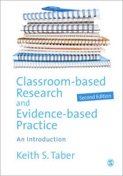Educational Research Methods

A site to support teaching and learning...
Survey
“Surveys usually look for data from large numbers of people. Some surveys collect information from whole populations of people. For example, a school could survey all its pupils, or all their parents, to find out their views on some issue relating to school policy. In such situations a high return rate, or at least making sure that everyone eligible to respond has the opportunity, may be sufficient for the findings to be of import. A more complex situation occurs when the population of interest is too large for all members to be asked to respond. In these situations, a sample of the population is surveyed. The sample has to be defined to ensure that it is representative of the wider population.” (Taber, 2013: 89).
“Survey: a survey is used to find about the level of association of one type of element with a different type of element. So for example, a survey could be used to find how many fume cupboards school science laboratories are typically equipped with (i.e. reporting the proportion of such laboratories having no fume cupboard, one fume cupboard, etc.). Commonly surveys are used to seek self-report information from people, regarding such matters as their attitudes or behaviours. Surveys may be used to test hypotheses by comparing responses of different survey items - e.g. one could test the hypothesis that a higher proportion of male science teachers than female science teachers expect to be promoted to head of department.” (Taber, 2014)
Ontological assumptions in surveys
A choice of survey as methodology tends to be aligned with a more positivistic, or at least ‘confirmatory’ approach. (Consider the examples above: e.g. fume cupboards are considered to unambiguously exist, to be objectively identifiable and readily countable)
i.e. questions can be asked about qualities of entities which can be readily characterised according to simple typologies…
Often in surveys, closed questions are asked so that responses can be readily analysed within pre-determined categories (n.b., confirmatory mind-set), to allow response frequencies to be used in statistical tests.
"Surveys may be applied within limited populations (the students in one school, for example), but are commonly used in relation to larger populations (e.g. secondary chemistry teachers in a national context) using sampling techniques and inferential statistics to make inferences about the populations sampled. A survey that all, or nearly all, science teachers responded to could tell us whether or not a higher proportion of male science teachers expect to be promoted to head of department than female science teachers; but in practice a representative sample of modest size is likely to be sought from which inferences can be drawn about the broader population.” (Taber, 2014)
Taber, K. S. (2014). Methodological issues in science education research: a perspective from the philosophy of science. In M. R. Matthews (Ed.), International Handbook of Research in History, Philosophy and Science Teaching (Vol. 3, pp. 1839-1893). Dordrecht: Springer Netherlands.
Epistemological assumptions in surveys
It is possible to identify a ‘population’ of interest (consider the examples above, e.g. secondary chemistry teachers in Scotland)
It is possible to sample the population to collect ‘representative’ data
A survey allows the same question to be asked of everyone in the sample
This is a personal site of Keith S. Taber to support teaching of educational research methods.
(Dr Keith Taber is Professor of Science Education at the University of Cambridge.)
2015-2017
Taber, K. S. (2013). Classroom-based Research and Evidence-based Practice: An introduction (2nd ed.). London: Sage.

